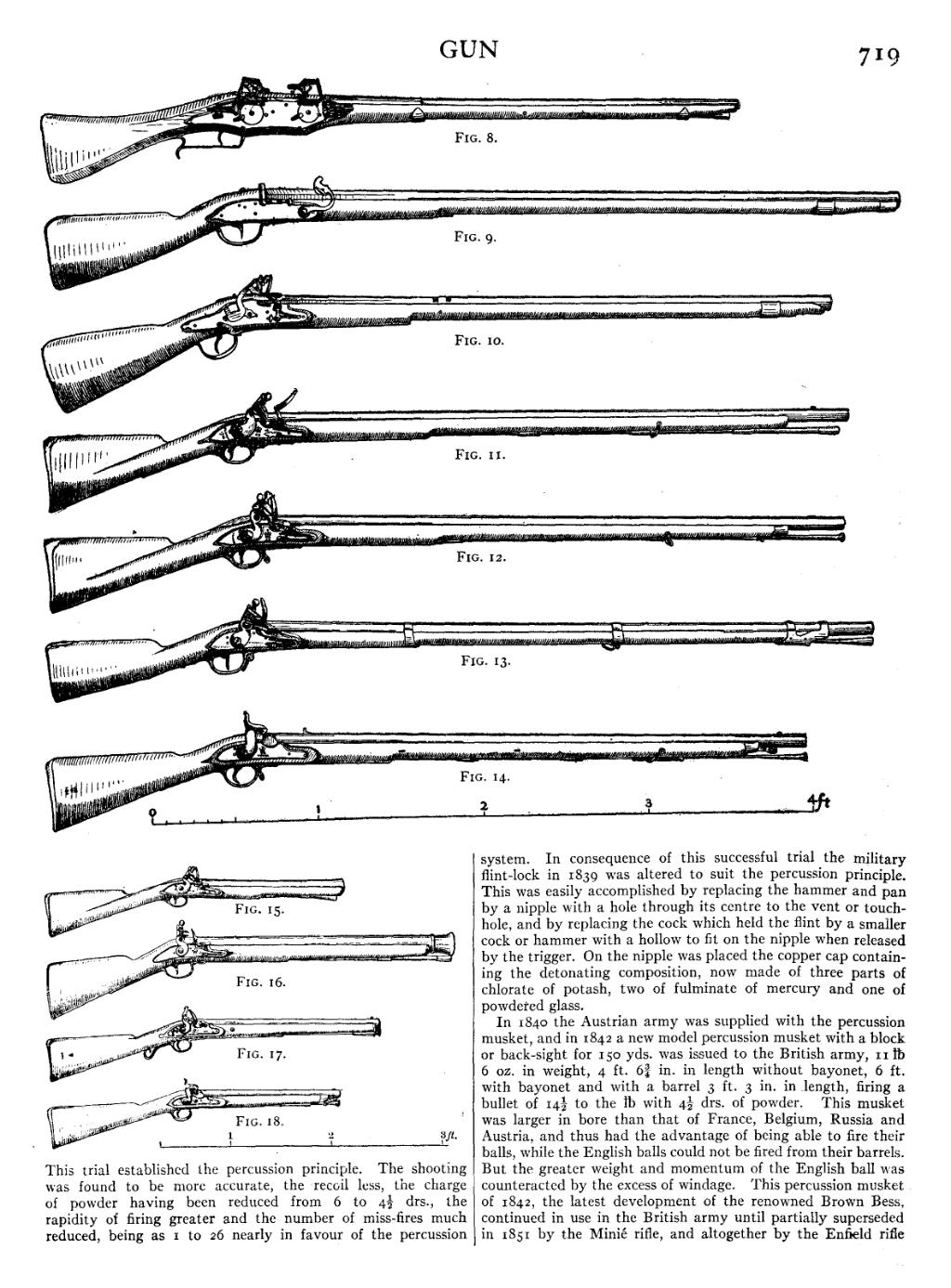This trial established the percussion principle. The shooting was found to be more accurate, the recoil less, the charge of powder having been reduced from 6 to 412 drs., the rapidity of firing greater and the number of miss-fires much reduced, being as 1 to 26 nearly in favour of the percussion system. In consequence of this successful trial the military flint-lock in 1839 was altered to suit the percussion principle. This was easily accomplished by replacing the hammer and pan by a nipple with a hole through its centre to the vent or touch-hole, and by replacing the cock which held the flint by a smaller cock or hammer with a hollow to fit on the nipple when released by the trigger. On the nipple was placed the copper cap containing the detonating composition, now made of three parts of chlorate of potash, two of fulminate of mercury and one of powdered glass.
In 1840 the Austrian army was supplied with the percussion musket, and in 1842 a new model percussion musket with a block or back-sight for 150 yds. was issued to the British army, 11 ℔ 6 oz. in weight, 4 ft. 634 in. in length without bayonet, 6 ft. with bayonet and with a barrel 3 ft. 3 in. in length, firing a bullet of 1412 to the ℔ with 412 drs. of powder. This musket was larger in bore than that of France, Belgium, Russia and Austria, and thus had the advantage of being able to fire their balls, while the English balls could not be fired from their barrels. But the greater weight and momentum of the English ball was counteracted by the excess of windage. This percussion musket of 1842, the latest development of the renowned Brown Bess, continued in use in the British army until partially superseded in 1851 by the Minié rifle, and altogether by the Enfield rifle


